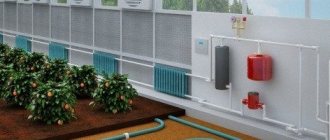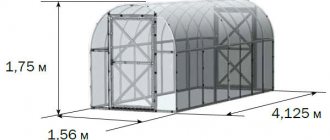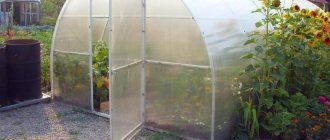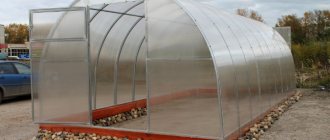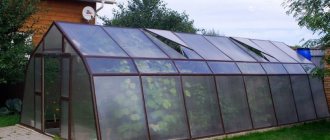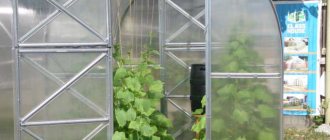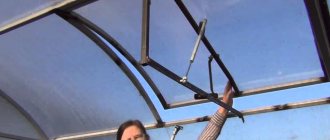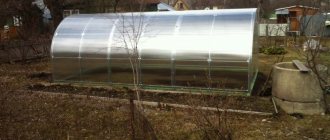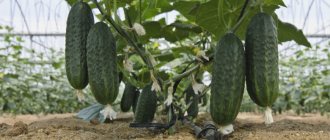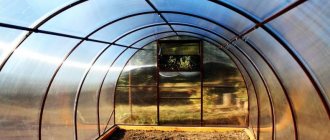Pros and cons of block support
Positive qualities include:
- quick installation;
- strength and durability;
- low thermal conductivity;
- the cost is lower than that of tape.
Among the disadvantages it should be noted:
- the difficulty of selecting products of the right size, since most often they have standardized indicators, which is why they may be too large;
- installation of some types will require the use of special equipment;
- for some types of blocks it is necessary to carry out external finishing, as they can absorb moisture, which is why they will begin to collapse;
- Suitable for medium and non-heaving soils.
Types of material and conditions of use
To build a foundation from blocks, 4 main types are most often used: FBS, expanded clay concrete, as well as gas silicate and foam blocks.
FBS
FBS is specially made to be used as a base for buildings for various purposes.
Foundation blocks have 2 subtypes:
- Monolithic has high strength and is used for strip or column foundations. It also has no voids, high density and large mass.
- The hollow subtype has holes inside into which reinforcement is installed and concrete is poured (similar to tape formwork). Such a foundation is stronger than a monolithic one, but more expensive. Its advantage is that it is easier to arrange various communications.
FBS blocks are the strongest and most durable of all types, and are also resistant to low temperatures (down to -60 ° C). This type of foundation is not susceptible to soil with high acidity or moisture. The disadvantage can be considered the difficulty of installation due to the large weight, since it is often difficult to lift them by hand, so special equipment will be required.
Note! If building materials are laid incorrectly, the likelihood of subsidence increases.
Expanded clay concrete
Expanded clay concrete blocks are made from cement, sand, water and pieces of expanded clay (this is a light clay that is pre-fired). The cost of such blocks is lower than brickwork, since their size is much larger. This type of product does not shrink over time and is also easy to decorate.
Disadvantages include high hygroscopicity (they strongly absorb water), which is why they need protection from moisture in the form of plaster or other finishing. Also, this type of block has a short frost resistance life (up to 100 cycles), and its dimensions may differ between the two parts taken, which makes it more difficult to select them.
On a note. This type of material is suitable for soil with low groundwater levels, and it also requires additional waterproofing.
Foam blocks
Foam blocks are a material made from foamed concrete. This is achieved by adding special substances or using a chemical reaction.
There are 2 main types of foam blocks:
- Non-autoclaved , which are most often made using the artisanal method. They dry naturally without the use of ovens. They have low strength.
- Autoclaved ones are dried in a special machine at a temperature of + 40 ° C and high pressure, which is why they are saturated with gas.
Reference. Foam blocks are usually made from cement, gypsum, fly ash or sand, lime and substances that emit gas during drying.
The advantage of these products is their small size and weight, which makes them easy to install, as well as ease of processing (you can hammer nails into them or cut them with a file). The disadvantages include hygroscopicity and shrinkage after construction.
Gas silicate
For the foundation of a greenhouse, you can use a gas silicate block, since its properties are similar to those made from foamed concrete, but its structure consists of ground quartz sand, lime and water (concrete can be used as an additional additive). To create bubbles inside the block, an aluminum suspension or powder is used, which upon contact with lime produces a chemical reaction.
The disadvantage of gas silicate products can be considered hygroscopicity and low resistance to deflection. The advantages include increased resistance to chemical attack and mechanical damage, as well as high strength.
Frame mounting methods
Regardless of the type of foundation, several types of fastening greenhouses to the edges of supporting structures are used. The fastening scheme depends on the purpose of the building - temporary or permanent. Due to the need for seasonal dismantling of temporary greenhouses, dismountable fastening units should be provided. Watch the video on how to properly attach polycarbonate for a greenhouse.
Classification of dismountable fasteners:
- Anchor bolts with threaded elements embedded in the harness;
- Locks, latches and “latch” type fasteners are fasteners for small removable greenhouses, based on the principle of a bolt mechanism;
- Grooves in the foundation into which frame posts are inserted, secured with studs or bolts;
- Pins driven into the ground - hollow frame elements are strung on them.
When installing a greenhouse on open ground, driving brackets are used. With a certain step, metal pins are inserted into the mounting loops, driven into the ground to a depth of half a meter.
Fixed greenhouses are permanently attached to the foundation, and waterproofing of the piping is required. When constructing concrete foundation supports, the frame elements are cast in place even at the stage of pouring the concrete mixture. The use of embedded parts allows you to create welded joints, which also need to be treated with a hydrophobic compound. The possibility of installing a non-dismountable greenhouse using collapsible units cannot be ruled out.
Despite the fact that the greenhouse is a lightweight structure, it requires a reliable and solid foundation. Indeed, in the absence of a good foundation, there is a risk that it will “walk” around the site, and young plants may die from frost and wind. So, what kind of foundation is needed for a greenhouse and how to build it correctly?
Calculation of quantity and laying step
The calculation of the number of blocks depends on the type chosen, since FBS differ in standard sizes from the rest. Most often, the calculation is carried out using the formula:
K=Vf/Vb, where:
- K – number of required products;
- Vf – total volume of the foundation (m3);
- Vb is the volume of one block (m3).
For example, FBS 9-3-6 has a volume of 0.14 m3, and the total value for a base 2 by 6 m is 2.3 m3, then 2.3/0.15 = 16.42 (rounded to 16).
also use special calculators for calculations that are available on the Internet. In them you can enter the approximate dimensions of the foundation and blocks, from which the required number of products for the foundation will be obtained.
If the foundation of blocks is made solid (ribbon), then all parts of the structure are laid out according to the principle of brickwork (in a checkerboard pattern). For a columnar base, installation is similar. The distance between the pillars usually does not exceed 1-2 m, since the lower parts of the frame or grillage (crowns) can sag.
Criterias of choice
The choice of one type of concrete foundation depends on:
- relief of the site;
- climate zone;
- financial capabilities;
- materials and dimensions of the greenhouse;
- time of use.
The presence or absence of groundwater and the level of soil freezing are also taken into account:
- If you need a budget option, but the terrain of the site is uneven, or you are planning a medium-sized greenhouse structure, you should choose a columnar foundation.
- When constructing heavy greenhouses on unstable soils, a slab is chosen. The most common are the options made of concrete and brick or strip. The materials for their construction are available, they will “merge” with any greenhouse configuration, and guarantee durability and strength.
Tools and materials
To build a block base you may need:
waterproofing (in liquid form or in rolls);- reinforcement (if hollow blocks are used);
- hammer drill and grinder;
- concrete mixer (can be replaced with a construction mixer or an attachment for a hammer drill) and containers for concrete;
- shovel and wood saw;
- building level;
- trowel or spatula;
- marker, pegs and thread.
What is needed for the job?
To install the greenhouse base yourself, you should prepare the following tools:
- rope or twine - for even markings;
- construction level;
- stakes or metal pins - for marking the dimensions of the structure;
- fasteners and durable anchors for connecting the base to the greenhouse;
- hammer, construction meter;
- hacksaw;
- shovels;
- boards and reinforcement for tape formwork.
Advice. You should take care of containers and bags for removing construction waste.
Instructions for building the base and installing a greenhouse
In order to make a block support structure for a greenhouse you need:
- Prepare the site (remove bushes, roots, 20 cm of turf, and level it).
- Make markings using thread and pegs. To do this, 12 equal marks are made, which are needed to construct an Egyptian triangle with an aspect ratio of 3:4:5.
- If you make 2 such triangles so that their right angles (90°) are opposite diagonally, you should get an even rectangle.
- Check the symmetry of the resulting figure by measuring diagonally;
- Make markings for the future foundation (under the tape or pillars made of blocks).
- Dig trenches or holes for the foundation. Their depth is most often 50% of the freezing point.
- Compact the edges and bottom.
- Make a drainage pad (put gravel and sand). It should be 20-30% of the depth.
- Fill the hole with liquid bitumen mastic or lay roll waterproofing.
- If a columnar version is made, then the width of the holes should be 10 cm larger than the future support (for example, the parts of the column will be folded 50x50 cm, then the hole in the ground will be 60x60 cm).
- You need to start laying the blocks on a concrete pad, and carefully coat each joint or seam with mortar and press them against each other.
- For a columnar base, you can make a grillage to which the greenhouse will be attached.
- If FBS blocks are used, then to install anchor fastenings you can drill holes in them with a hammer drill, insert bolts there and concrete them.
- If hollow blocks are used, anchors can be inserted into the concrete mixture that is used to fill the cavities.
After installing the foundation, you need to secure the greenhouse to the foundation. For the frame, wooden or metal beams can be used, which must be connected at the bottom with one crown. After this, the structure is secured using anchors, U-shaped fasteners, locks with latches or bolts with studs (depending on the presence of a grillage and the selected type of blocks).
Note! Before installing the greenhouse, waterproofing material is laid on the lower rims, and the frame is treated with protective mixtures (metal against corrosion, wood against rotting).
Find out how to install a greenhouse on expanded clay blocks from the video below:
Greenhouse without foundation
A small greenhouse can be installed without setting up a base. These include polycarbonate greenhouses.
Installation of a polycarbonate greenhouse without a foundation
The construction of a polycarbonate greenhouse can be carried out on the ground by assembling a light frame from a metal profile and covering it with polycarbonate honeycombs. In this case, you need to remember that such a building will last only a season - it cannot be used in the winter season.
The installation technology is as follows:
- After preparing the area and marking it for construction, the lower trim is assembled and installed on T-shaped supports.
- The frame is assembled and polycarbonate sheets are installed.
- The windows, doors, and ends of the greenhouse are lined.
T-shaped posts are buried in the soil for strengthening - they will serve as the main anchors. The gap at the bottom between the sheets and the ground surface must be closed with soil, filling the edges by about 5 cm.
